
Source: かねろ Kanero (@kanero_tuntun) - image used with permission
Japanese illustrator Kanero turns sweets and food into adorable monsters
- Tags:
- japanese illustrator / Japanese sweets / Kanero / Monsters / obake / Sweets
Related Article
-

Ginza Cozy Corner announces the winners of the ‘2020 Dream Cake Competition’
-
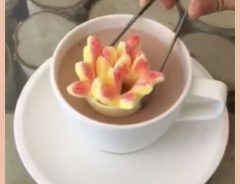
Beautiful Flavored Marshmallow Flowers That Bloom In Your Hot Chocolate
-
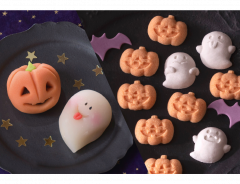
Historic Kyoto sweets maker gets into Halloween spirit with ghoulish traditional sweets
-
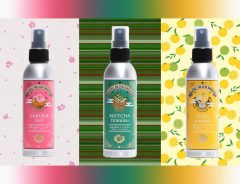
Moisturizing beauty mists envelop you in the fragrance of Japanese sweets
-
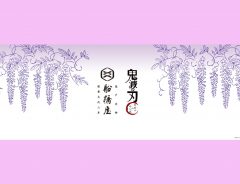
Famed kuzumochi sweets shop Funabashiya teams with Demon Slayer on specially packaged sweets
-
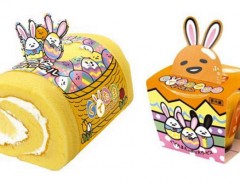
Celebrate Easter This Year With Gudetama, The Laziest Egg In Japan


The talented and inventive Japanese illustrator かねろ Kanero specializes in obake お化け. Obake is often translated as "ghost" or "monster," but it is written with the kanji 化, also found in the word chemistry 化学 kagaku. What the two have in common is they involve "transformation," so Japanese obake are supernatural beings that have been transformed into something very different than their normal state.
Although "monster" may convey an image of something horrific, obake is more neutral. This is appropriate for Kanero, who enjoys creating illustrations of adorable obake out of sweets, food, fruits and vegetables, and posting them on Twitter.
Kanero is a wizard at character design, finding inventive ways to transform elements of the original subject into features of the obake which seem natural and help bring them to life.
For example, take a look at this strawberry shortcake obake:
Reproduced with permission from かねろ Kanero (@kanero_tuntun)
Kanero's ingenious character design takes features of a typical Japanese strawberry shortcake, featuring layers of cream with slices of strawberry and decorated on top with whipped cream and whole strawberries, and puts them to use. Its head is crowned with a strawberry just like one you might see decorating the borders of a cake, its frilled collar reproduces the whipped cream piping, and a strawberry creates a decorative chest plate. Under its head, strawberry halves, which are also often featured as decorations, create the collar plate and you can see the sponge cake with layers of cream and strawberry pieces inside.
Recently, for Christmas, Kanero created several obake born from Christmas cookies and sweets. For example, here is one inspired by festive Christmas cookies. Even the cookie sheet which the cookies were cut out of becomes its cape. It's not only a seasonal obake, but it's an eco-friendly one, since it leaves no waste behind!
Reproduced with permission from かねろ Kanero (@kanero_tuntun)
Another adorable obake is based on a Stollen, a traditional German fruit cake typically enjoyed for Christmas and recently popular in Japan, and shows off the beautiful slices in its long thick tail.
Reproduced with permission from かねろ Kanero (@kanero_tuntun)
Kanero also creates designs based on Japanese-inspired desserts like this obake which seems to be based on a strawberry matcha cake or parfait. This humanoid obake almost looks like she's wearing a kimono, with the cream and strawberry forming the pattern in her obi sash. Kanero was so fond of this one that they used it as their Twitter profile picture. Humanoid obake occasionally appear in Kanero's roster of designs, as you'll discover if you scroll through their Twitter account.
Reproduced with permission from かねろ Kanero (@kanero_tuntun)
If you love pumpkin pudding, you'll surely appreciate this obake called "Puddingonly." As Kanero explains in a separate panel providing information on the lore, it was originally a cooking pot owned by a witch who illegally dumped it. Now it can only produce pumpkin pudding, the aroma of which often attracts city-dwellers.
Reproduced with permission from かねろ Kanero (@kanero_tuntun)
Kanero's obake aren't limited to the sweet kind, however. Take a look at this docile little obake based on a typical Japanese-style corn soup (not chunky, but smooth and creamy), complete with mini-croutons looking like tufts of fur in its ears and a sprinkle of chopped parsley on its head. It seems completely happy to be scooped up in a wooden spoon.
Reproduced with permission from かねろ Kanero (@kanero_tuntun)
Kanero also turns to seasonal fruits and vegetables for inspiration. In one series, there are two versions of each character, a normal version and a "hunting" version in which the obake takes on a fiercer appearance. For example, here are obake based on apples and sweet potatoes. In case you're wondering about the black dots, those a black sesame seeds which are often added to baked and candied sweet potatoes in Japan.
Reproduced with permission from かねろ Kanero (@kanero_tuntun)
To see all of Kanero's amazing obake character designs for yourself, follow them on Twitter here.